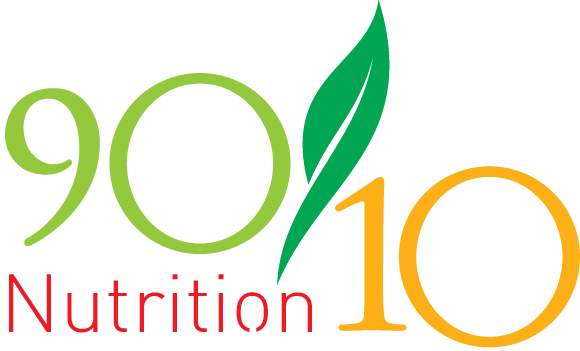“How many grams of protein does it have, bruh?”
“I can’t eat that, it has too many calories.”
“12 grams of fat? Are you crazy?”
“This has 27 grams of protein, only 2 grams of sugar, and it’s Gluten Free!”
It seems to me that food marketing today is all about the “macros”. In other words, they emphasize calories, fat, carbs, and protein. It seems that those are the things they want you to look at when (if) you read the back of the food label.
In fact, it seems as though the goal of much of the food marketing as I write this is to keep you from even reading the back of the label. They put the stuff they want you to think is important right on the front of the packaging.
“27 grams of protein per serving”
“115 mg of Omega 3 per serving”
“12 grams of fiber per serving”
“Only 100 calories per serving”
Are The "Macros" Important?
I am not here to tell you that protein grams, fat grams, carb grams, and calories are not important at all. THEY ARE important.
This issue is that the macro numbers don’t stand alone as a measure of how healthy or unhealthy a food is for you. They go together with the INGREDIENTS that make up those macros and, in my opinion, they are SECONDARY to ingredients for almost everyone.
Macros are changed by changing ingredients or changing ingredient quantities. That’s probably pretty obvious. If a product has oils in it, there will be fat grams. If a product has starches in it, there will be carb grams. If a product has meat in it, there will be protein grams. You can change the grams by changing the ingredients.
WHAT’S THE PROBLEM?
The issue is when macros are changed by adding artificial chemicals and modified ingredients that aren’t healthy. Fat grams can be lowered by replacing fatty ingredients with sugary ingredients that mimic the texture of the fatty ingredients. Carb grams can be lowered by replacing sugar with artificial sweeteners.
If you look ONLY at macros, you will miss the bigger picture for your health.
Why Ingredients Are Primary
Food manufacturers can’t manipulate the macros without disclosing the ingredients they used in the process. While the ingredient list isn’t a foolproof way to tell if something is healthy or not, I think it should always be the first and most important test.
The ingredients list is where you will find the sugar, preservatives, chemicals, and artificial ingredients that may have been added to your food to achieve a desired result. The desired result could be anything from longer shelf life to lower fat content or higher protein content.
HOW TO READ FOOD LABELS
- Read the ingredients list
- Make sure everything on the list is something you recognize as FOOD
- If you don’t recognize something, look the ingredient up to see what it is
- Use our food tiers to help
- IF the ingredients list is good and you are concerned with macros for a particular reason, check the macros at this point (see below for more thoughts)
WATCH OUT FOR THIS
Food manufacturers are required to disclose their ingredients but they often try to hide things under other names. Sugar, for example, has many names on the ingredient list. Fortunately, we have the power to look ingredients up on the internet to see what they really are. The general rule is to look it up if you don’t know what it is!
Unfortunately, food manufacturers are not always, or even often, interested in our health or the the health of their products. They are interested in turning a profit. Of course, being profitable is important as a business, but too often it seems they are willing to use the lowest cost ingredients with the longest shelf life while spending tons of money on advertising and marketing. They might even use ingredients that are potentially biologically addictive in order to increase sales.
Example Food Label


The two products shown above are extremely similar products. Both are creamy peanut butters. They both have the same serving size listed (2 Tbsp). The JIF lists lower calories, same fat grams, slightly higher carbs, and slightly lower protein.
If someone was to go by macros only, they might choose the JIF for less calories, or they might choose the Adams for the extra gram of protein per serving and lower carbs.
However, if you go by ingredients, the choice is clear. The JIF has sugar listed in the ingredients which means there is ADDED sugar. It also has Hydrogenated Vegetable Oils (otherwise known as TRANS FAT).
The Adams is the clear winner for the healthier option but you wouldn’t know this if you went by macros only.
Should You Worry About Macros At All?
In my opinion, probably 99% of the population doesn’t need to worry much about macros. I recommend eating REAL FOOD with ingredients you recognize and eating reasonable portions. That’s what our whole program is about.
With that being said, it’s perfectly fine to test your body and see what works best for you. I have seen some people do very well on low carb diets and others do very well on higher carb diets. You can feel free to test out those options and see how you feel, but always start with the ingredients list first!
Also, those who have specific physique and performance goals will do well to figure out what macronutrient percentages work best for them. It won’t be the same for everyone and it won’t be the same for every type of goal.
Those who are looking to do a physique competition will watch macros closely and adjust them at different times in the preparation cycle. Those who want to compete in running races and triathlons may need to watch their macronutrients as well.
I still recommend that EVERYONE start with the ingredients list and find REAL FOODS first and THEN adjust macros if necessary.



Comments (2)
I love this article!! I have people tell me all the time “But it only has 3 grams of fat! It’s healthy!” Not necessarily. Look at a national brand’s “healthy” bread. It may only have 100 calories for 2 slices, but it has HFCS, whereas Dave’s Killer Bread has 110 per slice, but no HFCS. Guess which one I’m going for?
I could t agree more! We all have different macro needs based on our goals, but we all need food in its purest form when possible! So thankful for 90/10 and the support this community provides. The tools of the Clean Plate Club are invaluable!